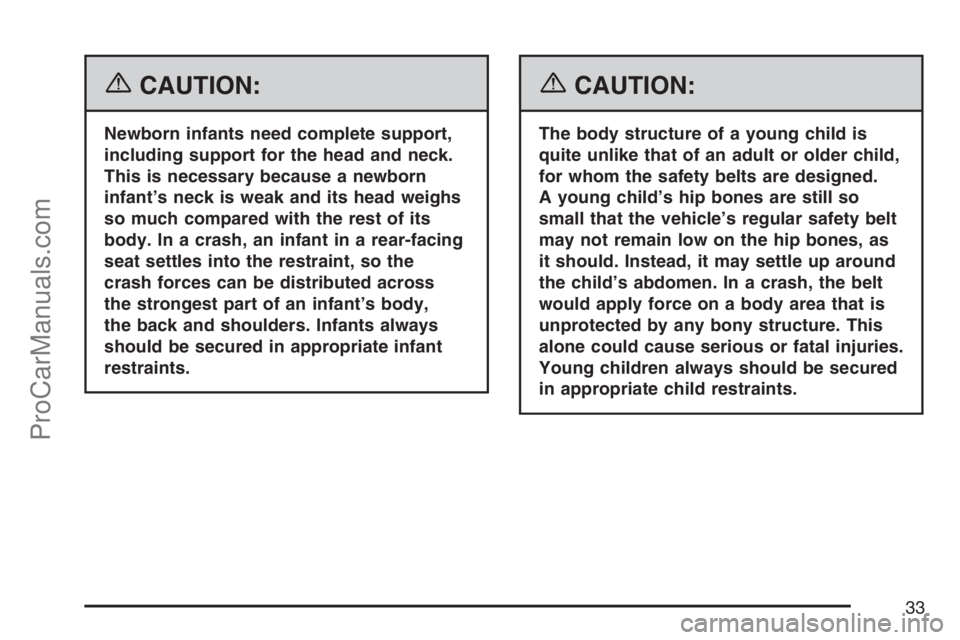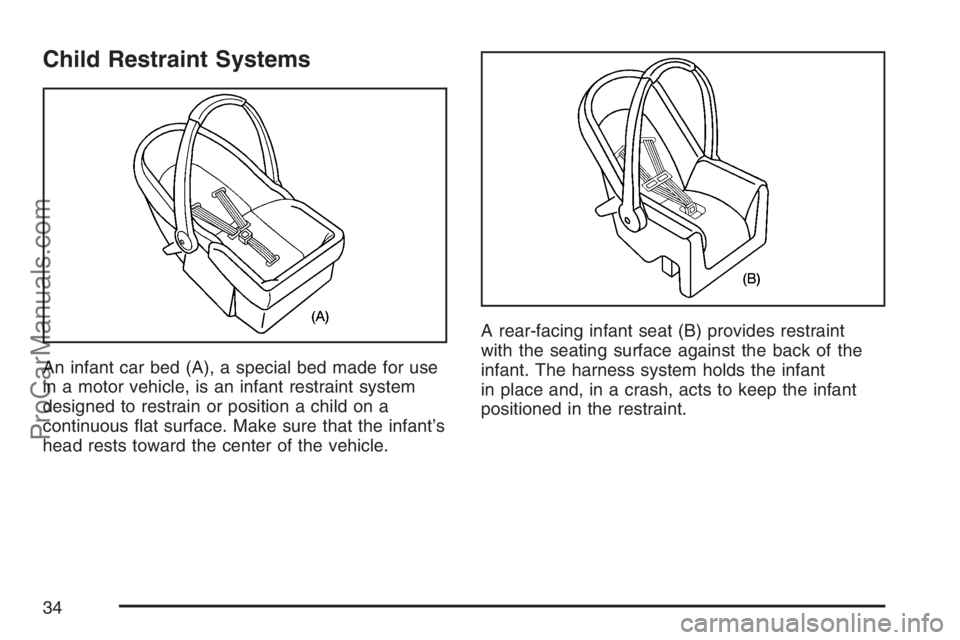2007 SATURN SKY child seat
[x] Cancel search: child seatPage 1 of 384

Seats and Restraint Systems
....................... 7
Front Seats
.............................................. 8
Safety Belts
............................................ 12
Child Restraints
...................................... 28
Airbag System
........................................ 43
Restraint System Check
......................... 56
Features and Controls
................................ 59
Keys
....................................................... 60
Doors and Locks
.................................... 66
Windows
................................................ 71
Theft-Deterrent Systems
......................... 73
Starting and Operating Your Vehicle
....... 77
Mirrors
.................................................... 93OnStar®System
..................................... 94
Storage Areas
........................................ 99
Convertible Top
.................................... 100
Instrument Panel
....................................... 105
Instrument Panel Overview
................... 108
Climate Controls
................................... 122
Warning Lights, Gages, and Indicators
.... 127
Driver Information Center (DIC)
............ 144
Audio System(s)
................................... 158
Driving Your Vehicle
................................. 191
Your Driving, the Road, and Your
Vehicle
.............................................. 192
Towing
................................................. 230
2007 Saturn SKY Owner ManualM
1
ProCarManuals.com
Page 7 of 384

Front Seats..................................................... 8
Manual Seats................................................ 8
Driver Seat Height Adjuster........................... 9
Reclining Seatbacks.................................... 10
Seatback Latches........................................ 12
Safety Belts.................................................. 12
Safety Belts: They Are for Everyone........... 12
Questions and Answers About
Safety Belts............................................. 17
How to Wear Safety Belts Properly............. 18
Driver Position............................................. 18
Safety Belt Use During Pregnancy.............. 26
Passenger Position...................................... 27
Safety Belt Pretensioners............................ 27
Safety Belt Extender................................... 27
Child Restraints............................................ 28
Older Children............................................. 28
Infants and Young Children......................... 30
Child Restraint Systems.............................. 34Lower Anchors and Tethers for
Children (LATCH).................................... 38
Securing a Child Restraint in the
Passenger Seat Position.......................... 38
Airbag System.............................................. 43
Where Are the Airbags?.............................. 45
When Should an Airbag In�ate?.................. 47
What Makes an Airbag In�ate?................... 48
How Does an Airbag Restrain?................... 48
What Will You See After an
Airbag In�ates?........................................ 48
Passenger Sensing System......................... 50
Servicing Your Airbag-Equipped Vehicle...... 54
Adding Equipment to Your
Airbag-Equipped Vehicle.......................... 55
Restraint System Check............................... 56
Checking the Restraint Systems.................. 56
Replacing Restraint System Parts
After a Crash........................................... 57
Section 1 Seats and Restraint Systems
7
ProCarManuals.com
Page 18 of 384

How to Wear Safety Belts Properly
This part is only for people of adult size.
Be aware that there are special things to know
about safety belts and children. And there
are different rules for smaller children and babies.
If a child will be riding in your vehicle, see
Older Children on page 28orInfants and Young
Children on page 30. Follow those rules for
everyone’s protection.
First, you will want to know which restraint
systems your vehicle has.
We will start with the driver position.
Driver Position
Lap-Shoulder Belt
The driver has a lap-shoulder belt. Here is how
to wear it properly.
1. Close and lock the door.
2. Adjust the seat so you can sit up straight.
To see how, see “Seats” in the Index.3. Pick up the latch plate and pull the belt across
you. Do not let it get twisted.
The lap-shoulder belt may lock if you pull the
belt across you very quickly. If this happens,
let the belt go back slightly to unlock it.
Then pull the belt across you more slowly.
18
ProCarManuals.com
Page 27 of 384

The best way to protect the fetus is to protect the
mother. When a safety belt is worn properly, it
is more likely that the fetus will not be hurt
in a crash. For pregnant women, as for anyone,
the key to making safety belts effective is wearing
them properly.
Passenger Position
To learn how to wear the passenger’s safety belt
properly, seeDriver Position on page 18.
The passenger’s safety belt works the same way
as the driver’s safety belt — except for one
thing. If you ever pull the shoulder portion of the
belt out all the way, you will engage the child
restraint locking feature. If this happens, just let
the belt go back all the way and start again.
Safety Belt Pretensioners
Your vehicle has safety belt pretensioners for the
driver and right front passenger. Although you
cannot see them, they are part of the safety belt
assembly. They help tighten the safety belts during
the early stages of a moderate to severe frontal
or near frontal crash if the threshold conditions for
pretensioner activation are met.Pretensioners work only once. If they activate in
a crash, you will need to get new ones, and
probably other new parts for your safety belt
system. SeeReplacing Restraint System Parts
After a Crash on page 57.
Safety Belt Extender
If the vehicle’s safety belt will fasten around you,
you should use it.
But if a safety belt is not long enough, your retailer
will order you an extender. When you go in to
order it, take the heaviest coat you will wear, so
the extender will be long enough for you. To
help avoid personal injury, do not let someone else
use it, and use it only for the seat it is made to
�t. The extender has been designed for adults.
Never use it for securing child seats. To wear
it, just attach it to the regular safety belt. For more
information, see the instruction sheet that comes
with the extender.
27
ProCarManuals.com
Page 28 of 384

Child Restraints
Older Children
Older children who have outgrown booster seats
should wear the vehicle’s safety belts.
Q:What is the proper way to wear safety belts?
A:If possible, an older child should wear a
lap-shoulder belt and get the additional
restraint a shoulder belt can provide. The
shoulder belt should not cross the face
or neck. The lap belt should �t snugly below
the hips, just touching the top of the thighs.
It should never be worn over the abdomen,
which could cause severe or even fatal internal
injuries in a crash.
According to accident statistics, children are safer
when properly restrained in the rear seating
positions than in the front seating positions.
In a crash, children who are not buckled up can
strike other people who are buckled up, or can be
thrown out of the vehicle. Older children need
to use safety belts properly.
28
ProCarManuals.com
Page 30 of 384

{CAUTION:
Never do this.
Here a child is sitting in a seat that has a
lap-shoulder belt, but the shoulder part is
behind the child. If the child wears the belt
in this way, in a crash the child might slide
under the belt. The belt’s force would then
be applied right on the child’s abdomen.
That could cause serious or fatal injuries.The lap portion of the belt should be worn low and
snug on the hips, just touching the child’s thighs.
This applies belt force to the child’s pelvic bones
in a crash.
Infants and Young Children
Everyone in a vehicle needs protection! This
includes infants and all other children. Neither the
distance traveled nor the age and size of the
traveler changes the need, for everyone, to use
safety restraints. In fact, the law in every state
in the United States and in every Canadian
province says children up to some age must be
restrained while in a vehicle.
{CAUTION:
Children can be seriously injured or
strangled if a shoulder belt is wrapped
around their neck and the safety belt
continues to tighten. Never leave children
unattended in a vehicle and never allow
children to play with the safety belts.
30
ProCarManuals.com
Page 33 of 384

{CAUTION:
Newborn infants need complete support,
including support for the head and neck.
This is necessary because a newborn
infant’s neck is weak and its head weighs
so much compared with the rest of its
body. In a crash, an infant in a rear-facing
seat settles into the restraint, so the
crash forces can be distributed across
the strongest part of an infant’s body,
the back and shoulders. Infants always
should be secured in appropriate infant
restraints.
{CAUTION:
The body structure of a young child is
quite unlike that of an adult or older child,
for whom the safety belts are designed.
A young child’s hip bones are still so
small that the vehicle’s regular safety belt
may not remain low on the hip bones, as
it should. Instead, it may settle up around
the child’s abdomen. In a crash, the belt
would apply force on a body area that is
unprotected by any bony structure. This
alone could cause serious or fatal injuries.
Young children always should be secured
in appropriate child restraints.
33
ProCarManuals.com
Page 34 of 384

Child Restraint Systems
An infant car bed (A), a special bed made for use
in a motor vehicle, is an infant restraint system
designed to restrain or position a child on a
continuous �at surface. Make sure that the infant’s
head rests toward the center of the vehicle.A rear-facing infant seat (B) provides restraint
with the seating surface against the back of the
infant. The harness system holds the infant
in place and, in a crash, acts to keep the infant
positioned in the restraint.
34
ProCarManuals.com